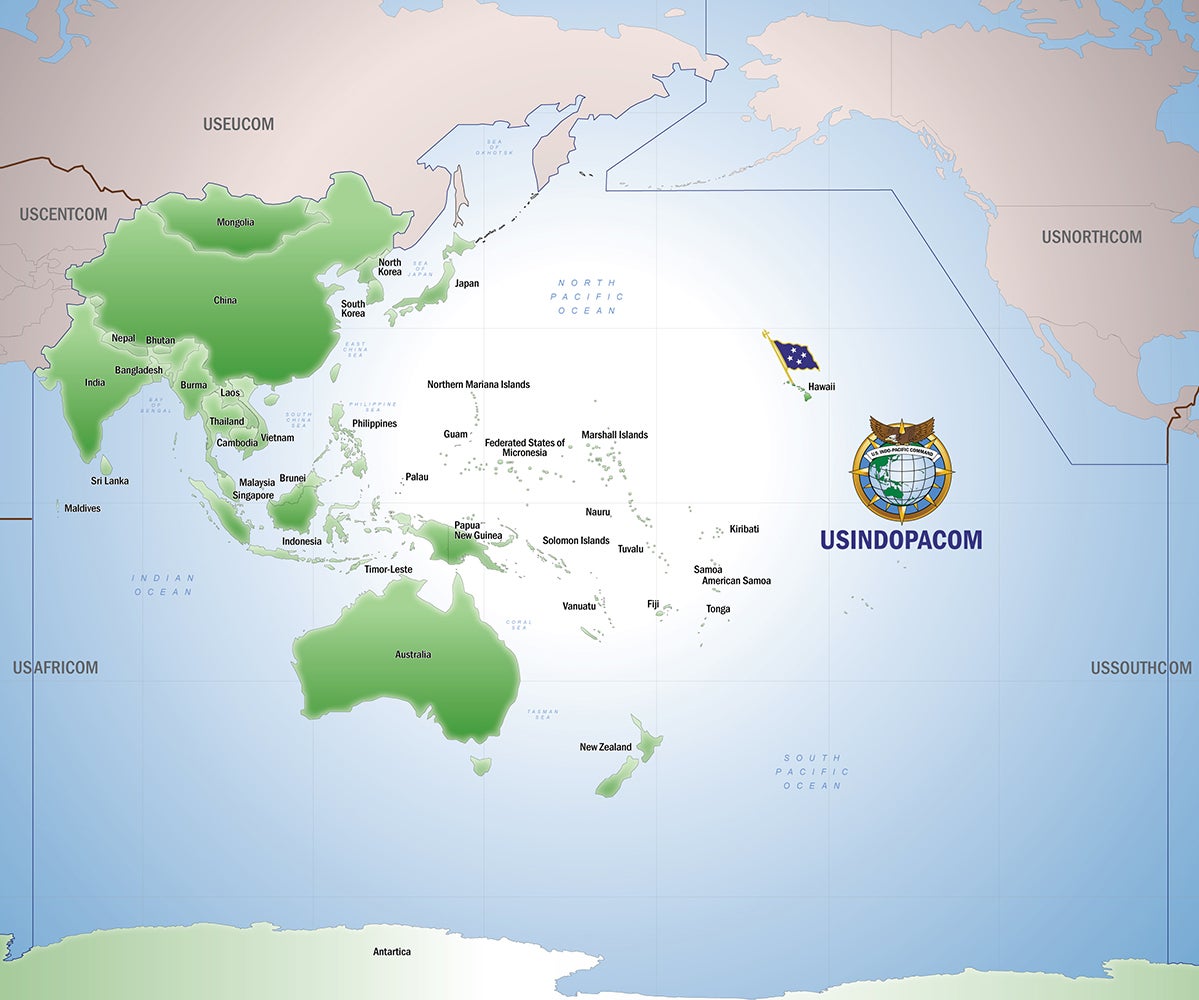The Hawaiian Islands are perhaps best known for their lush landscape, tropical climate and rich culture. But, as coterm Rachel Hirshman learned this summer, the islands also play an important role in the United States’ military operations.
For nine weeks, Hirshman interned at the U.S. Indo-Pacific Command, a combatant command center near Honolulu that oversees the U.S. military’s operations in the Asia-Pacific region. Hirshman assisted with the planning and execution of joint military exercises and operations and saw firsthand what it takes to coordinate four branches of the military in one of the most socially, economically and geopolitically diverse parts of the world.
Hirshman’s internship was available through the Walter H. Shorenstein Asia-Pacific Research Center, part of the Freeman Spogli Institute for International Studies, and sponsored by the U.S.-Asia Security Initiative. The program offers fully funded, faculty-mentored summer internships at prominent policy organizations around the world. Internships are open to undergraduate and graduate students of all majors; view a full list of opportunities and details about applying.
Stanford News caught up with Hirshman to learn more about U.S. military operations in Hawaii and her work with INDOPACOM.
How would you describe United States INDOPACOM to someone unfamiliar with military operations and geopolitics?

“My time at INDOPACOM also taught me that there are diverse ways in which students like me can begin a career in public service.”
—Rachel Hirshman
Coterminal Student
United States Indo-Pacific Command is one of six geographic combatant commands operated by the U.S. military to achieve national security objectives and defend national interests and territory. It is responsible for overseeing and syncing the operations of four military services – Army, Navy, Marine Corps and Air Force – within the Indo-Pacific region. The geographic region for which INDOPACOM is responsible is the largest of all geographic combatant commands and spans from India to California and Alaska to Antarctica. One of INDOPACOM’s most common duties is provisioning U.S. personnel for and coordinating responses to humanitarian disasters.
Why did you choose to work with INDOPACOM?
INDOPACOM afforded me a chance to work in an organization that is more operationally focused than policy focused. This enabled me to better understand the day-to-day operations of the U.S. military and the needs of the forces on the ground. This perspective was one I could get only through such an internship and a perspective I believe to be important for any future role that I have in public service.
Working in the Indo-Pacific region also enabled me to work on issues of immense geopolitical and national security significance, given that two of the biggest geopolitical threats to the U.S. – China and Russia – are big players in the region. Additionally, the denuclearization discussions for the Korean Peninsula were just ramping up when I was considering working at INDOPACOM. Discussions with my mentor, Ambassador Karl Eikenberry, also assured me that this internship would be incredibly valuable.
Can you tell us about the work you did at INDOPACOM?
I worked with the J3 Operations Directorate, and specifically with the training and exercises division. My primary responsibilities were to assist with the development of products, strategy and a vision for INDOPACOM support to training events and exercises. The work exposed me to the ways in which the U.S. government operationalizes strategic priorities to preserve national security and maintain key alliances in the region. Working in J3 also opened my eyes to the scope and importance of U.S. military exercises.
You happened to be in Hawaii during RIMPAC, the largest international maritime warfare exercise. What was that like?
RIMPAC, or Exercise Rim of the Pacific, is an international maritime warfare exercise held biennially in Honolulu. Each iteration, numerous nations from across the world – but primarily the Indo-Pacific region – participate in the exercises to foster partnerships and ensure cohesive military relationships in advancement of the safety and security of the region.
For one day, ships from around the world participating in the exercise were open to U.S. Department of Defense personnel and their affiliates for tours and viewing. Given my internship with the DoD, I brought my family into Pearl Harbor where we had the privilege of touring a New Zealand warfighting ship, as well as a massive U.S. aircraft carrier. I was able to gain a greater appreciation for life on a naval vessel as well as some of the equipment necessary to execute missions.
What did you learn over the course of your internship and how do you think it will help you in your career?
Fundamentally, I learned that INDOPACOM is a very strategically important geographic command, with a very extensive exercise portfolio, and is a fast-paced and constantly evolving place to work and grow as an aspiring public servant.
My time at INDOPACOM also taught me that there are diverse ways in which students like me can begin a career in public service. INDOPACOM exposed me to many of those pathways by permitting me to work alongside individuals from a variety of backgrounds and experiences.
My discussions with former senior government and military officials at INDOPACOM helped inform my own career aspirations and illustrated first-hand the kinds of discussions that would take place and the products that would be built in various government agencies to facilitate a government’s approach to issues of national security.

The U.S. INDOPACOM area of responsibility covers more of the globe than any of the other geographic combatant commands. (Image credit: Courtesy of U.S. Indo-Pacific Command)